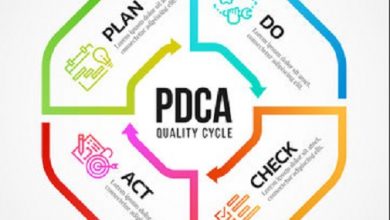What is a business plan and why is it important and Steps for plan preparation
Business plan
Planning is critical to any goal you have in life—in the business world, this is no different. Thus, to ensure that an enterprise achieves results and does not get lost along the way, it is important to use a fundamental tool: the business plan.
It is the document in which all the details of an enterprise, its strategies, objectives and goals are defined so that the entrepreneur can foresee future mistakes and avoid setbacks. In this way, this instrument helps both in the construction of new businesses and in the expansion of companies that are already active.
Why is it important?
The primary function of the business plan is precisely planning. As such, this document is an excellent tool to assess the feasibility of a new venture or expand your business.
This is because, through it, it is possible to foresee problems, risks and consider all the important factors for your business to take off. In addition, the tool can also be beneficial to:
- know the real needs of your business;
- plan commercial and marketing actions;
- know the main competitors;
- segment your target audience;
- discover strengths and weaknesses of the project;
- facilitate the achievement of objectives and goals;
- enable better communication between partners, employees, customers and investors;
- raise financial and human resources.
How to prepare your business plan?
To facilitate the preparation of the business plan, it is recommended to separate the document into parts. Below, we list the steps that must be followed. Follow up!
Step 1: define the business model
Creating a business model can be a good alternative for those who are not yet familiar with all the details of a complete plan . For this, it is interesting to generate a document that shows, in a more simplified, clear and objective way, what the company’s concepts are and the viability of the ideas.
Here, the tip is to create a visual canvas with important information, such as:
- partnerships;
- activities;
- resources;
- value offer;
- relationship;
- channels;
- customer segment;
- cost structure;
- source of revenue.
In that sense, the business model canvas can be an important step for the first tests . That way, you can start organizing your information faster and more streamlined, before moving on to a detailed plan.
Step 2: Write the Executive Summary
After the first tests, it’s time to start creating your complete business plan. Therefore, the first part that must be written is the executive summary, where important information about the company must be summarized, such as:
- description of the project;
- competitive differential;
- business mission;
- description of the professional profile of entrepreneurs and employees;
- products and services offered;
- target Audience;
- location of physical headquarters — if any;
- total investment;
- legal form;
- tax framework.
When writing your executive summary, it is important to consider the profile of your readers , whether they are possible investors, partners or partners, creating a document with clear and concise language.
But it is necessary that the document manages to arouse the interest of the reader , in addition to conveying professionalism and seriousness, without becoming a boring reading.
Step 3: Analyze the market
Another important step for preparing the business plan is the analysis of the market in which the company operates. For this, it is necessary to make clear who your potential customers are, in addition to your competitors and how you will work with your suppliers.
Target audience segmentation
In relation to customers, it is important to break down in detail who they are and what their buying habits are. To do this, ask questions like:
- Does your product or service reach individuals or companies?
- how and where does this audience usually buy?
- what is its age, gender, education and location?
- what is the purchase frequency?
- how much is this customer willing to spend for the product?
- what pains does the customer feel and that your product can remedy?
Here, it is important to keep in mind that these answers are not purely speculative. Thus, it is necessary to conduct market research and analyze your competitors to understand and segment your audience.
Competition Analysis
As for the competition, it is important to verify which companies operate in the same market as yours and which seek the same target audience. Therefore, keep in mind that not all businesses similar to yours will always be your competition .
In the beauty sector, for example, there may be several shampoo brands, but each one has a different positioning. Still, brands aimed at hairdressing salons are not directly competing with those targeted to the final public belonging to the C class.
So look at companies that talk to the same people you want to talk to and see what their strengths and weaknesses are . In this sense, it is important to analyze, for example:
- prices;
- product or service quality;
- service provided;
- payment conditions;
- delivery options;
- business differentials.
Based on this analysis, it is possible to find gaps in the market and understand what competitive advantages your company can bring. In addition to observing unfavorable scenarios and actions that are not fruitful.
Step 4: Create the Marketing Plan
The marketing plan is the step that will describe all the products in detail, in addition to presenting the sales strategies. In this part, it is necessary to detail the characteristics and differentials of what will be offered, informing all the specifications, such as quality, colors, sizes and prices.
Still, it is necessary to clarify the strategies for the product to reach the customer . Therefore, define a complete distribution plan, informing, for example, whether the item will be offered in virtual or physical stores.
Finally, it is important to define the marketing strategies , that is, how the company will make the customer know that that product exists and how it is possible to boost sales.
Step 5: Draw up the operational plan
It’s no use creating a thousand sales strategies if your company is not able to deliver. Therefore, the next step in the business plan concerns the operational.
In this part, it is necessary to describe the operation of the enterprise and analyze the necessary steps to provide the service or sell the product. Therefore, it is necessary to list important information, such as:
- time required to carry out the sales process;
- productivity of the necessary equipment and materials;
- distribution and storage capacity;
- quantity and qualification of the team ;
- availability and terms of suppliers.
A tip that can help you visualize the plan is to attach a plan of the physical layout of the location , in addition to the layout of gondolas and departments. Also, include information about employees in each sector and what roles they occupy.
Step 6: define the financial plan
Finally, you need to make a financial plan that will help you understand what the investment should be for the company to materialize. Therefore, it is necessary to list what will be the initial costs, expenses and income, cash flow, working capital and profits.
In this sense, it is necessary to consider the cost of everything that was planned, from the beginning of the business plan, therefore, put expenses at the tip of a pencil, for example:
- feedstock;
- Providers;
- equipment, machinery, fixtures and furniture;
- domains and hosting of websites and online stores;
- employee salaries ;
- physical establishments;
- marketing.
At this point, it will only be necessary to work with estimates, however, it is important to carry out research to try to get as close as possible to the real numbers.
In addition, it is essential to estimate revenues and carry out a projection of the return on investment to understand how long it will take before the amount invested initially is paid back.
How to evaluate your business plan?
After completing all the steps and structuring your business plan, it is worth creating simulations to speculate scenarios for the company. In this way, it will be possible to generate plans to face unexpected situations, in addition to seeking ways to reduce costs in the event of negative scenarios.
Therefore, carefully evaluate the document to understand if the information is clear and will be easily understood by an investor or partner. But if you are not so familiar with the financial issues of a new business, the tip is to seek help from an accountant, who will be able to create a complete budget plan, evaluating each scenario.
As we have seen, the business plan is an essential strategic tool for anyone wanting to start a business or expand a business. This document is capable of providing important information and establishing parameters for the entrepreneur to clearly understand whether or not it is worth investing.




